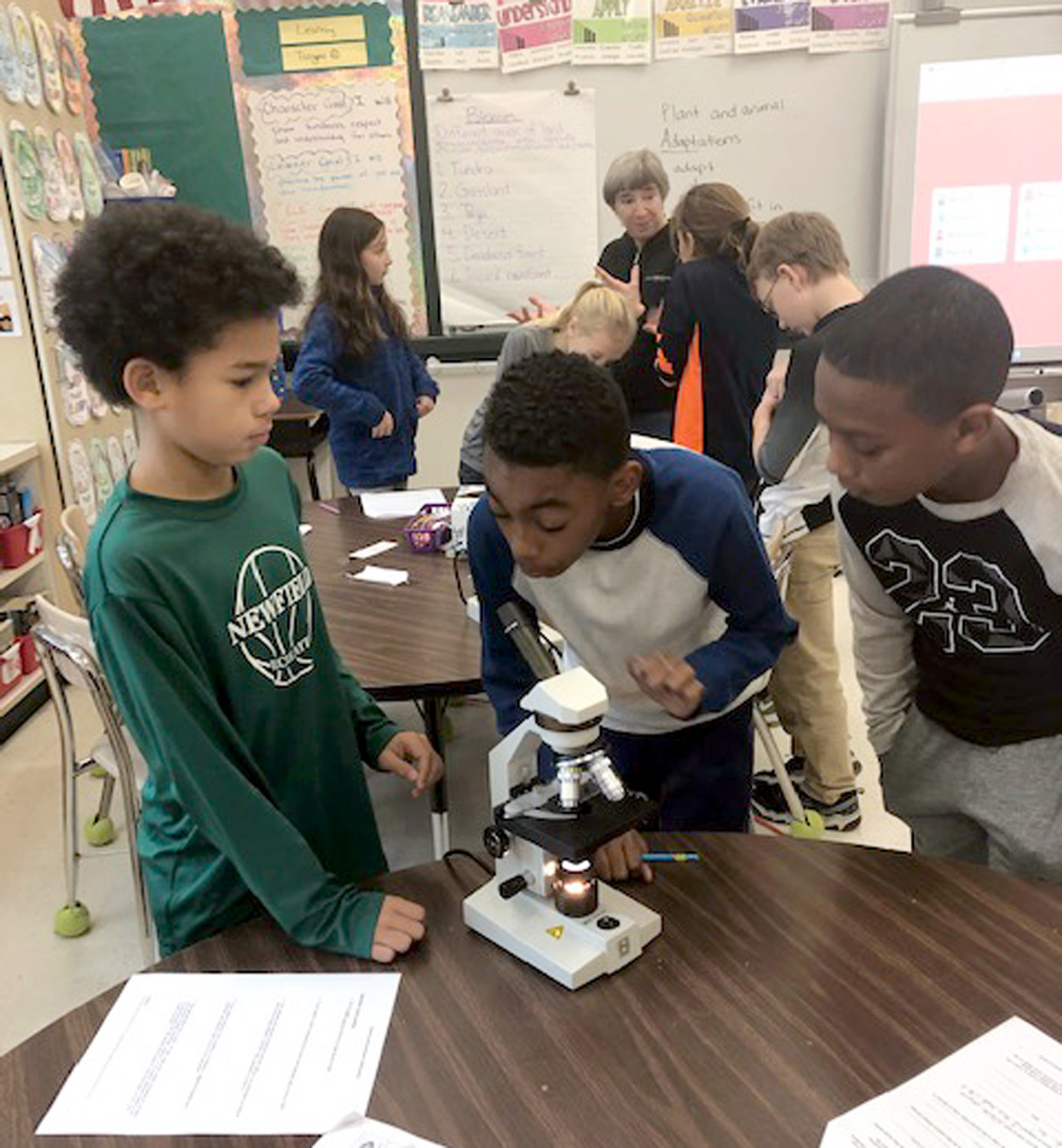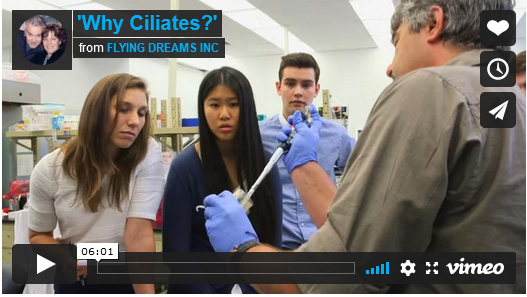Douglas Chalker, professor of biology in Arts & Sciences at Washington University in St. Louis, received a five-year $660,281 collaborative award from the National Institutes of Health (NIH) to support the ASSET program, an outreach program associated with the Tetrahymena Stock Center currently at Cornell University, but relocating to WashU under Chalker’s leadership.


Tetrahymena is a ciliated protozoan that has been widely used at the elementary school level for hands-on science. Donna Cassidy-Hanley and Ted Clark, faculty at Cornell who founded the ASSET program, have been developing curriculum modules using Tetrahymena, training teachers to use this curriculum, and sending kits to elementary schools around the U.S. since the 1990s. As the program directors planned their retirement, Chalker, who has been working with Tetrahymena since he started his postdoc in 1992, was the perfect person, along with the Institute for School Partnership (ISP) at WashU, to keep the program running.
“I’m thrilled to be taking over this highly successful program started by Cornell,” said Chalker, who first learned about this program during national and international meetings and getting to know other researchers in the field.
Chalker, in collaboration with ISP, will focus on two objectives. First, to expand the activities of the program, they aim to reach populations traditionally underrepresented in science in the St. Louis area. ISP has already been working with these target populations for nearly 30 years. Second, they aim to incorporate more mathematics and computational thinking into the science curriculum.
“The basic curriculum has been designed, but needs to be modified to fit changing science standards. We do not want students to think of biology and math as two separate subjects in the classroom. We want to help them enforce their quantitative skills when they're thinking about biological samples,” explained Chalker, who thinks Tetrahymena is a good organism for understanding basic scientific principles.
Tetrahymena’s simplicity makes for easy engagement
Tetrahymena is a perfect model organism to engage students for a variety of reasons. They’re single cell organisms that don’t require special equipment to study. They are simple, but have fairly complex structures and behaviors that can be demonstrated, both at the cellular level and organismal level, to students at different educational levels. They can live on a bench for weeks, so a teacher receiving a kit can hold onto it until they are ready to use it.
They are large, transparent, and relatively easy to see with simple microscopes. Students can feed them India ink and observe the intercellular process of phagocytosis in a matter of minutes. They are aquatic pond organisms that swim around and have regular behavior that students can track. They respond to various chemical and physical stimuli. They can be put in an electric field and will start swimming the other direction, so students can actually understand how currents affect behavior.
“And they are fun to watch. It is a valuable experience for students to see that there is complex life just below visual detection,” said Chalker, who enjoys being part of a small research community that is highly productive. Two Nobel Prizes have been awarded for work on discoveries made in Tetrahymena.

ISP provides the vehicle for bringing the lessons Tetrahymena can teach to the classroom
The team is looking for teachers to learn about Tetrahymena research in the Chalker Lab and work with an ISP instructional specialist to figure out how to fit this curriculum into their classrooms such that the activities align with Next Generation Science Standards and Missouri Learning Standards. This means supporting teachers in learning this content so they are prepared to bring it to their students and engage them in hands-on investigations while learning digital tools, mathematical concepts, and biological processes.
“ISP has a K-8 curricular program called mySci that is used by almost 180,000 students and 4,000 teachers in the region. Finding those intentional places where a particular activity is a great extension and can be added to these can automatically expand the reach and engage more students in this project,” ISP’s Associate Director Rachel Ruggirello said.
“We plan to reach teachers with new curriculum that can get their students excited about science. They're going to see new cohorts of students coming through every year, and we want to start that as early as we can, before they get too busy and lose that wonder we all have as children. I see it as a chance to inspire students to think about science as a career,” Chalker added.
“ISP partners with almost all of the schools and districts across the St. Louis region. If we know what teachers want and need, we can help to thoughtfully engage and create projects that are really going to work if they're funded, so that we can make sure that they get implemented with integrity, and meet those goals of encouraging engagement with science at an early age, especially in some of our most underrepresented communities where they don't often have the support or materials to integrate ambitious and authentic STEM learning for students,” Ruggirello explained.

(image courtesy of Tetrahymena Stock Center at Cornell)
An opportunity to be “In St. Louis, for St. Louis”
The program also fits with the Chancellor's call to be Washington University in St. Louis, for St. Louis. In his inaugural speech, Chancellor Martin said, “I see it as our ‘WashU Compact’ — a commitment between us and the greater St. Louis region as we look to strengthen our community partnerships and impact ‘In STL and For STL.’”
This is a chance to have a broader partnership with ISP’s program that is dedicated to reaching the K through 12 St. Louis population. The program originally from Cornell gets to continue and expand, while ISP improves on the curricular offerings.
“That's the direction the university is moving. I think ISP has always sat in that space. This is just an opportunity to highlight this work. Work that really is about being in St. Louis and for St. Louis, and something that we're hoping to continue building on as the University continues strategic planning in that direction,” Ruggirello said.






